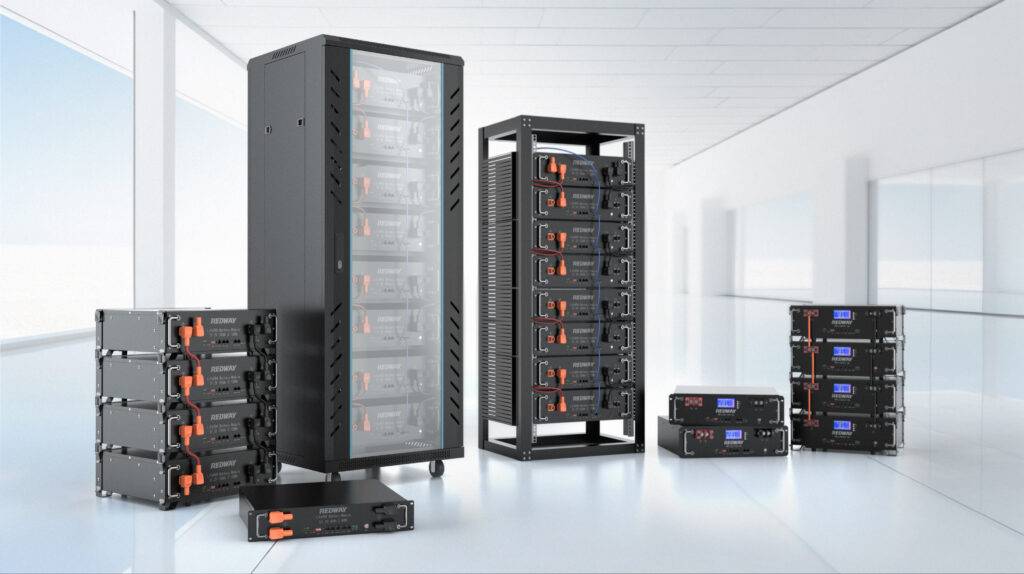In recent years, lithium-ion rack battery systems have undergone significant transformations, driven by advancements in technology and increasing demand for efficient energy storage solutions. These systems, pivotal in various applications from data centers to renewable energy storage, have evolved to meet the rigorous demands of modern energy infrastructure. This article delves into the trends and innovations shaping the evolution of lithium-ion rack battery technology, providing a comprehensive overview of the current landscape and future prospects.
Historical Context and Initial Developments
The journey of lithium-ion battery technology began in the early 1990s with the development of the first commercially viable lithium-ion cells by Sony. Initially, these cells were primarily used in consumer electronics due to their high energy density and lightweight properties. Over time, the technology’s potential for larger-scale applications, such as in rack-mounted battery systems, became increasingly apparent.
Early Rack Battery Systems were characterized by relatively modest energy densities and relatively large physical footprints. The initial focus was on integrating these systems into existing infrastructure, with an emphasis on enhancing safety and performance under standard operating conditions.
Advancements in Battery Chemistry
The core of lithium-ion rack battery system evolution lies in advancements in battery chemistry. Significant improvements have been made in several key areas:
1. Energy Density Improvements
Modern lithium-ion batteries feature advanced cathode materials like lithium iron phosphate (LiFePO4) and nickel manganese cobalt (NMC) that have substantially increased energy density. Enhanced energy density allows for more compact battery packs with higher capacity, making them ideal for rack-mounted configurations where space is a premium.
2. Enhanced Safety Features
Safety has always been a critical concern in battery technology. Recent developments include solid-state electrolytes and advanced thermal management systems. Solid-state batteries, which replace the liquid electrolyte with a solid, offer improved safety by reducing the risk of thermal runaway and fire hazards. Additionally, improved thermal management systems help maintain optimal operating temperatures, further enhancing safety and performance.
3. Longer Lifecycle and Durability
Cycle life and calendar life have seen significant improvements, thanks to advances in electrode materials and battery management systems (BMS). Modern lithium-ion batteries can now withstand thousands of charge and discharge cycles with minimal degradation, which translates to lower overall costs and reduced environmental impact over the lifespan of the system.
Innovations in Battery Management Systems (BMS)
Battery Management Systems (BMS) play a crucial role in optimizing the performance and safety of lithium-ion rack battery systems. Recent innovations in BMS technology include:
1. Advanced Monitoring and Diagnostics
Modern BMS units incorporate sophisticated monitoring and diagnostic capabilities, enabling real-time data collection and analysis. These systems can track key parameters such as voltage, current, and temperature, providing valuable insights into battery health and performance. Advanced diagnostic tools help in predicting potential issues before they become critical, thus enhancing overall reliability.
2. Enhanced Communication Protocols
Communication protocols have evolved to support more complex data exchanges and integrations with external systems. Modern BMS units often use CAN bus (Controller Area Network) and Modbus protocols for seamless integration with Energy Management Systems (EMS) and other control systems. This interoperability enhances system efficiency and facilitates better coordination with renewable energy sources and grid systems.
3. AI and Machine Learning Integration
The integration of Artificial Intelligence (AI) and Machine Learning (ML) into BMS technology has enabled predictive analytics and adaptive control strategies. AI-driven algorithms can analyze historical data and operational patterns to optimize charging and discharging cycles, thus extending battery life and improving efficiency.
Integration with Renewable Energy Sources
The demand for energy storage solutions that integrate seamlessly with renewable energy sources has driven significant innovation in lithium-ion rack battery systems. Key developments include:
1. Grid-Scale Energy Storage
Lithium-ion batteries are increasingly being used in grid-scale energy storage systems to store energy from renewable sources such as solar and wind. These systems help balance supply and demand, stabilize the grid, and ensure a continuous power supply even when renewable generation is intermittent.
2. Microgrid Applications
In microgrid applications, lithium-ion rack battery systems are used to provide reliable power supply for isolated or remote areas. These systems can store excess energy generated by local renewable sources and provide backup power during outages or periods of low generation.
3. Integration with Smart Grids
The evolution of smart grids has necessitated advancements in battery technology to support more dynamic and responsive energy systems. Lithium-ion rack battery systems are now equipped to interact with smart grid infrastructure, enabling features such as demand response, peak shaving, and frequency regulation.
Future Trends and Prospects
Looking ahead, several emerging trends and innovations are poised to shape the future of lithium-ion rack battery systems:
1. Solid-State Batteries
Solid-state batteries represent a significant leap forward in lithium-ion technology. By replacing the liquid electrolyte with a solid, these batteries offer improved safety, higher energy density, and better performance in extreme temperatures. While still in the developmental phase, solid-state batteries hold great promise for future rack-mounted systems.
2. Recycling and Sustainability
As the adoption of lithium-ion batteries grows, so does the focus on recycling and sustainability. Innovations in battery recycling technologies aim to recover valuable materials and reduce environmental impact. Companies are investing in advanced recycling processes and developing closed-loop systems to ensure that battery materials are reused efficiently.
3. Next-Generation Materials
Research into next-generation materials such as lithium-sulfur and lithium-air batteries is ongoing. These materials offer the potential for even higher energy densities and longer lifecycles, which could further enhance the capabilities of rack-mounted battery systems.
Conclusion
The evolution of lithium-ion rack battery system technology reflects a dynamic and rapidly advancing field, driven by continuous innovation and the growing demands of modern energy systems. From enhanced energy density and safety features to advanced battery management and integration with renewable energy sources, the advancements in this technology are shaping the future of energy storage and distribution. As we look towards the future, the ongoing development of new materials, recycling processes, and solid-state technologies promises to further revolutionize the landscape of lithium-ion batteries, driving progress in both efficiency and sustainability.




